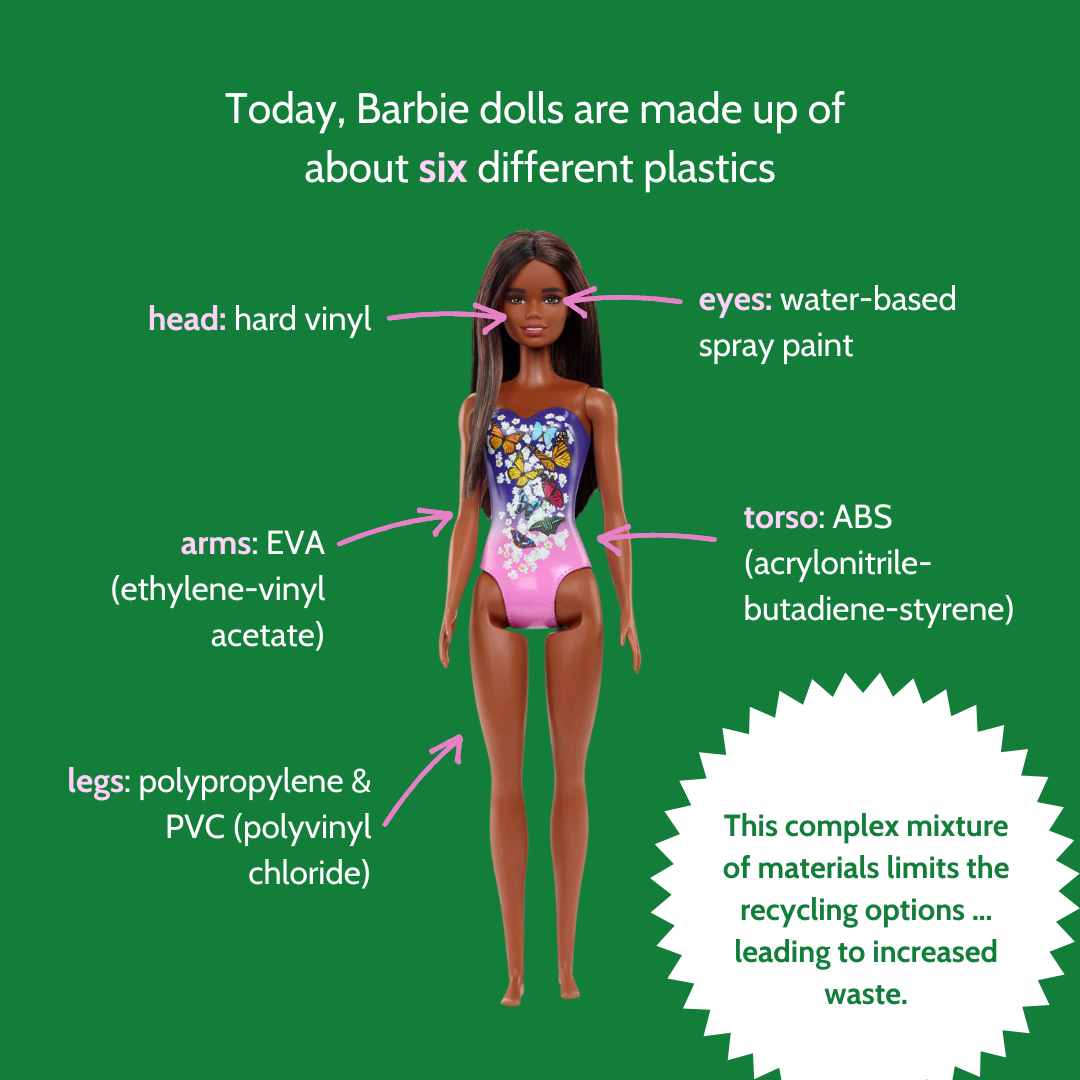Is Life in Plastic Recyclable After All? The Aftermath of Barbie
Published: August 3, 2023

The highly anticipated Barbie movie released late July has reignited Barbie enthusiasts worldwide. This matured appreciation for the doll has the potential to rapidly increase the demand of the toy and contribute to immense waste quantities as production is fulfilled. The plastic and paint materials used in this excessive manner, along with the carbon emissions created, raises alarms as the environment is compromised. The production of the Barbie movie itself contributed to a world shortage of fluorescent pink paint as Rosco, a supplier who specializes in paint designated for film productions, ran out of product before the film was complete.
The toy industry is recognized as the most plastic-intensive market as 90% of toys in the United States alone are made of plastic components. It does not help that most toys cannot be recycled due to the complex mixture of materials that go into their production. For example, one barbie doll is made of at least six different materials including EVA (ethylene-vinyl acetate), ABS (acrylonitrile-butadiene-styrene), polypropylene, PVC, hard vinyl compound, and a water-based spray paint. This distinct mixture of materials makes recycling the toys unfeasible as the cost to collect, separate, and recycle the undifferentiated waste surpasses the value of the recycled materials. For companies like Mattel, this non-profitable avenue is not appealing.

Since being established in 1959, Mattel has sold an average of 60 million Barbies annually as the demand for their dolls has remained steady amongst young children who hope to embody Barbie’s beauty. From a sustainability perspective, Barbie dolls have potentially contributed to immense waste as one doll accounts for 182 grams of plastic along with approximately 660 grams of carbon emissions once plastic production, manufacturing, and transportation are factored in. This means Mattel is utilizing at least 10.9 billion grams of plastic in addition to producing 39.6 billion grams of carbon emissions annually on one product alone.
.png?width=1080&height=1080&name=3%20-%20Copy%20(2).png)
As a company they have however, started to take note of their environmental impact. Mattel has set their focus on becoming more sustainable within the marketplace as they aim to use 100% recycled, recyclable, or bio-based plastic for its products and packaging by 2030. Beginning in 2021, Mattel also introduced the PlayBack program, a recycling scheme that allows customers to send back old toys for repurposing. By attempting to develop a circular economy within their company, Mattel is now paving the way for other toy connoisseurs to follow suit and forge forward in an eco-friendly manner.
With these facts in mind, as a consumer, individuals should adapt more environmental practices when shopping for toys. Some recommendations are to:
- invest in durable long-lasting toys
- buy toys made of simple materials to streamline the recycling process
- send damaged toys into the manufacturer for repair
- prioritize secondhand toys
- utilize Mattel’s PlayBack program
Toys have been a source of entertainment for both children and adults for as long as humanity has prevailed, but we must exercise caution in how we utilize them. Acknowledging the impact toys have on the environment is critical to alter the approach taken and while reading this blog was the first step, the journey extends well beyond this.
